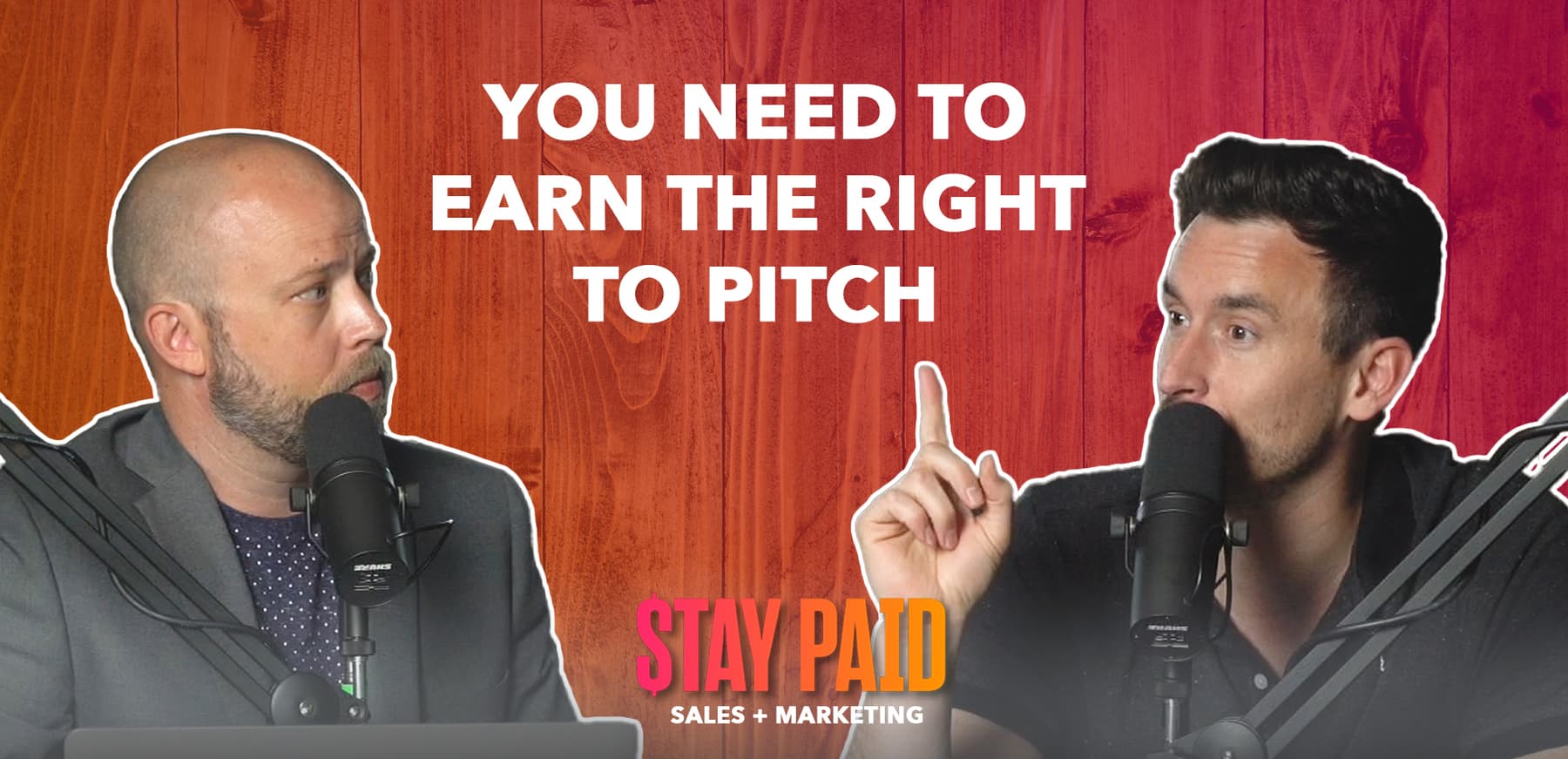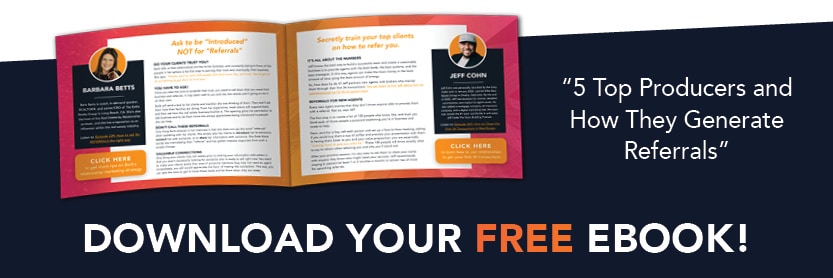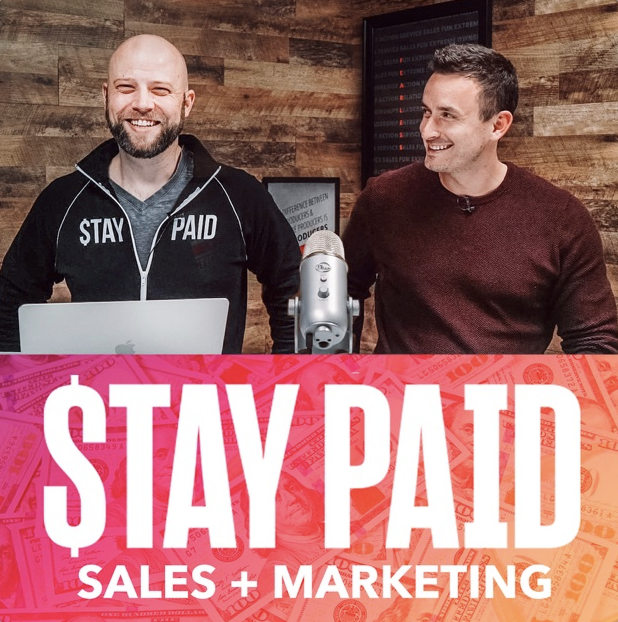How to Make a Sales Call
A Step-by-Step Guide to Outbound Phone Sales
Who should listen: Salespeople prospecting for leads who need a framework to organize their sales calls and seamlessly move their prospects through their funnel.
Key idea: Using a script is essential when making cold calls, but they don’t have to be spoken word for word. Use scripts as a framework to guide you through a natural conversation.
Action item: Whether it’s the one we discuss in this episode or another, find and use a script/framework to guide you through your sales calls.
When searching for a sales script for cold calling, you want to select one that doesn’t hold you hard and fast to text from which you can’t deviate. Instead, look for one that offers a framework such as the 8-step framework we use at ReminderMedia, which encourages a controlled and guided conversation.
- Introduction
- What you do that solves your prospect’s pain point
- How your product/service is uniquely different
- Why the prospect should choose you
- Button up and answer any remaining questions
- Explain pricing
- Offer a final thought to reiterate the value
- Ask for the order
“Where did you get my number?!”
If you’re an inside sales representative, having a hostile prospect ask where you got their phone number is one of the much better reactions you could receive from making a cold call. Any experienced telemarketing rep will tell you that making outbound cold calls requires tenacity, a thick skin, and most importantly, a call script.
 Photo by Moose Photos from Pexels
Photo by Moose Photos from Pexels
A good call script will keep a prospect on the phone and provide you with a framework for engaging them in a free-flowing conversation, during which they can come to know, like, and trust you. It will provide you with a road map and clear directions for how to get from one stage of the sales process to the next organically. And a good call script will guide you through all the stages of the sales funnel, from your introduction to asking for the order.
In today’s Silver Dollar episode, we walk you through the same 8-step framework we teach to our inside sales representatives at ReminderMedia for how to make a sales call. Our cold call script is specially designed to allow them and you to control the pace and direction of the call without losing sight of the goal—to close the sale.
We explain the best way to engage your prospects quickly, the topics along the way where you should consider spending the least and the most amount of time, the phrases that will give you permission to pitch your product/service and seamlessly move you to and through the pricing question, the best advice for how to ask for the order, and more.
 Photo by Pavel Danilyuk from Pexels
Photo by Pavel Danilyuk from Pexels
Here in the show notes, we go into more detail about what is arguably the most difficult part of a sales call—the introduction. Like the subject line of an email, if you don’t immediately capture your prospect’s attention in your introduction, you won’t have an opportunity to deliver your message before they hang up.
To deliver a compelling introduction, we suggest that you:
- Apply leverage
- Set expectations
- Demonstrate that you understand their pain points
- Qualify the prospect using discovery questions
- Transition using bridge questions
As you listen to the episode, you can hear how Luke and Josh easily move through the introduction using certain phrases, each of which is meant to keep the conversation moving forward.
Apply leverage
You already know that you don’t have a lot of time to say something to a prospect that will encourage them to stay on the phone with you. If you’re lucky, you might have 30 seconds. What magic words can you say while making a cold call that will lure them in just enough to give you those few extra precious moments to firmly capture their attention?
We suggest referring to something that is immediately recognized by, important to, or connects with your prospect. It’s called leverage, and it isn’t hard to find.
Use your prospect’s name
The easiest piece of leverage you can use during a cold call is your prospect’s name . . . and assume that the person who picked up the phone is that person. For example, saying “Hi, Susan” rather than “May I speak to Susan?” suggests a level of intimacy that your prospect is likely to respond to.
Mention a referral or past client
Another leverage point is a referral or past client, and the more familiar the source of the referral is to your prospect, the better. Imagine, for instance, that you pick up the phone and someone says, “Your next-door neighbor, Mrs. Smith, suggested I give you a call.” Chances are good that your prospect will stay on the phone long enough to hear why Mrs. Smith said to call.
Reference a lead source
If your prospect has responded to a Facebook ad, downloaded a lead magnet, joined your email list, or did something else to suggest they are a warmer lead, use that to get the conversation going. It will remind your prospect that they reached out to you and, therefore, gave you permission to follow up with them. Your prospect is less likely to hang up on you if you are, essentially, returning their call.
Use social media
If you scroll through a prospect’s Facebook, Instagram, or other social media pages, you’re guaranteed going to find something you can use as leverage. The connection you make between what you find and the reason for your sales call may not be as strong as the previous three leverage points, but that’s not to say you can’t get creative. For example:
- Did you attend the same school or college?
- Do you have children of similar ages?
- Did you vacation at the same destination?
- Do you share any of the same interests?
- Did you like one of their posts?
You could also pull your thinking cap tight over your ears and look for clues to suggest that what you are selling could be something useful to them.
Consult LinkedIn connections
While LinkedIn has progressed beyond its original vision, by now everyone is familiar with using LinkedIn to make introductions between people they know and others who want to meet those same people. With a more professional purpose than other social media platforms, you can use LinkedIn to explore industries, companies, locations, job titles, and, of course, individual people to find potential prospects and information that could be used as leverage.
 Image by tiffany loyd from Pixabay
Image by tiffany loyd from Pixabay
Refer to a meeting
If you made a visit to a prospect’s office, if you presented a webinar/seminar your prospect attended, if you previously met with the prospect, or if your prospect missed any of these events, you could use the occasion as leverage for making outbound sales calls. We imagine that if a caller said they had visited your office and spoken to your boss who thought you would benefit from “x”, you’d probably listen.
Set expectations
Here’s the thing—no one is waiting to receive a cold call. It’s virtually certain that when you call, the person you’re calling will be occupied. You are, de facto, interrupting whatever it is they’re doing.
Luke mentions that one of the things people hate most about receiving cold calls is that they don’t know how long the call is going to take; i.e., how long the interruption is going to last. Consequently, instead of listening to you, they’re focused on finding an opportunity to interrupt to say they’re not interested and hang up.
The best way to get past this resistance is to tell them how long the call is going to take. Luke likes to say, “Let me frame it up for you in 30 seconds” or, if he’s at a conference, “Let me give you my best 15-second elevator speech.”
Of course, if you can get your prospect interested, then time won’t be much of a consideration. Mentioning a precise time frame isn’t as important as is putting your prospect at ease and reassuring them that the call won’t take long.
Demonstrate that you understand their pain point
Whether you work in a B2B or B2C industry, you want to demonstrate that you understand your prospect’s pain point so that you can present your service/product as the solution.
 Photo by Andrea Piacquadio from Pexels
Photo by Andrea Piacquadio from Pexels
Right now in real estate, buyers are confronting a severe shortage of homes to buy. As an agent, what can you say in your introduction that will sufficiently intrigue a prospective client that you can find them a home? Have you found homes for other buyers (or, even better, for one of their neighbors)? Do you have a strategy for winning competitive bidding wars or the inside track on what’s happening in a particular neighborhood?
Qualify using discovery questions
The point of asking discovery questions is to find out as much as you can about your prospect’s situation to understand better if you can help them and how. The answer to discovery questions will also point you toward more questions.
But here is the most important point about discovery . . . do not treat discovery like one of the stages of the sales process.
Too many inside sales representatives load the front end of their call with discovery questions. Their discovery questions come across like an inquisition where they pummel their prospects with a barrage of questions, one after the other.
Don’t. Do. That.
If you are conducting your sales call properly and your call script is operating as a framework, you should be asking questions throughout the call. You want to ask questions in a way that they come across as a normal part of an engaging conversation.
Use a bridge question to transition to the next phase
You’re at that point in your sales call where you want to introduce your value proposition. Up to now, you’ve been trying to earn enough of your prospect’s trust to secure their permission to pitch your product/service. It can be a tricky transition.
 Photo by Pavel Danilyuk from Pexels
Photo by Pavel Danilyuk from Pexels
Josh presents a transition this way: “If I could show you ‘x’, would you have two minutes for me?” Luke likes to use a technique he calls the takeaway: “Let me ask you a couple of questions to see if this even makes sense.” Luke likes this bridge because it doesn’t make the caller sound desperate for the sale and puts the prospect at ease.
If your prospect says yes, then congratulations! You are good to go.
If they say no, then either:
- They don’t believe in the value of your product/service.
- They don’t believe they’ll use your product/service.
In either circumstance, you have an objection you need to overcome before you can move forward. For help with overcoming objections, we recommend you listen to these previous episodes:
Practice your sales call introduction by role-playing. Have your partner play different types of prospects like ones who are agreeable, or disinterested, or who have an objection. Have different responses for different types of pain points a prospect might bring up. Be sure to listen carefully so you’ll know what discovery questions to ask. And when you get to the bridge question, find out if your partner is genuinely interested in moving forward.
When you listen to this week’s episode, you’ll learn more about how to make a sales call and hear great examples of how you can move through all the stages of the sales funnel.
Connect | Resources
A special offer for Stay Paid listeners: staypaidpodcast.com/offer




















 Soundcloud
Soundcloud iHeart Radio
iHeart Radio Spotify
Spotify Spotify
Spotify


